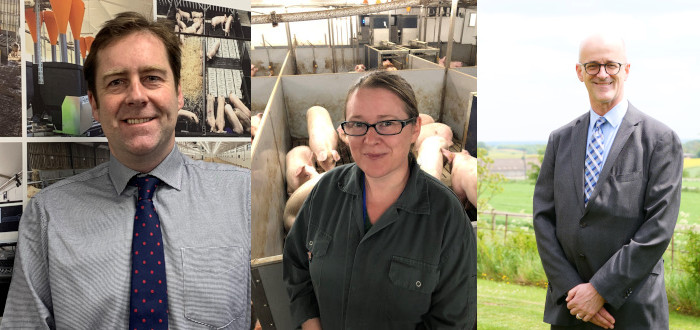The latest report to be published by CIEL (Centre for Innovation Excellence in Livestock) urges the industry to adopt and extend innovative measures to ensure the targets for net zero in the livestock sector can be met.
The report concludes that, despite targets of a 64% reduction in carbon dioxide emissions by 2050, current measures will only achieve a 24% reduction. The so-called ’emissions reduction gap’ can only be filled through new advances and innovations in technology, services and management approaches.
Dr Mark Young, innovation specialist at CIEL, presented the findings of the report alongside Phil Bicknell, CIEL director, CIEL’s head of innovation, Dr Grace O’Gorman. Dr Young said: “Obstacles must be removed to improve uptake of known strategies for reducing emissions, and a systematic approach implemented to create an enabling environment that will accelerate further innovation within the sector.
“The areas highlighted in this report are where a major proportion of resources should be focused, to deliver the additional emission reductions needed. We expect these reductions will come from lower emission feed production systems, increased feed efficiency, improved animal health and greater nutrient circularity.”
He went on to explain that, although the report highlighted many positives within the findings, the report reinforces that the targets for net zero will not be met without significant change: “Farmers shouldn’t be expected to deliver this on their own. They will need support to implement both known strategies to reduce emissions and new strategies to bridge the gap we have identified.
“This report is a call to policymakers and farming leaders to focus further investment in innovation to help the livestock industry to reduce emissions in areas identified in this “Bridging the Gap” report. While there may be other areas that offer significant emission reductions, those reported on here are a good place to start.
“This emphasises the critical need for new innovations and for change to be rapid and widespread, to actively support adoption of both known and new technologies.”
Mr Bicknell echoed Dr Young’s comments, and reinforced the message coming from the report: “The focus of the report is to ultimately ask the question of where to look for new innovations that are capable of making significant reductions in emissions.
“Delivering net zero for the UK is critical and there is enormous potential to unlock emissions reductions in agriculture. The livestock sector is a vital part of the supply chain that delivers highly nutritious food for society. But to ensure that is done in a more sustainable way, CIEL believes that new innovations are essential to supporting a lower carbon footprint.”
The full report, Net Zero & Livestock: Bridging the Gap, can be downloaded here




